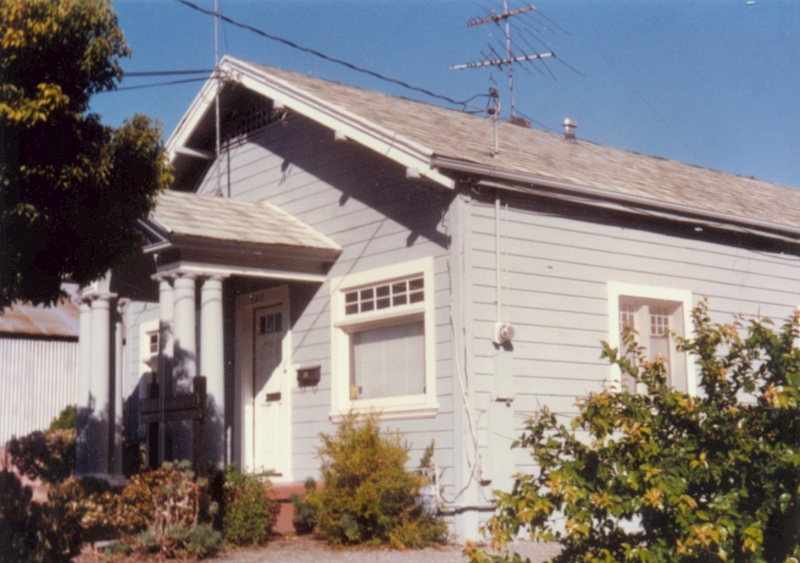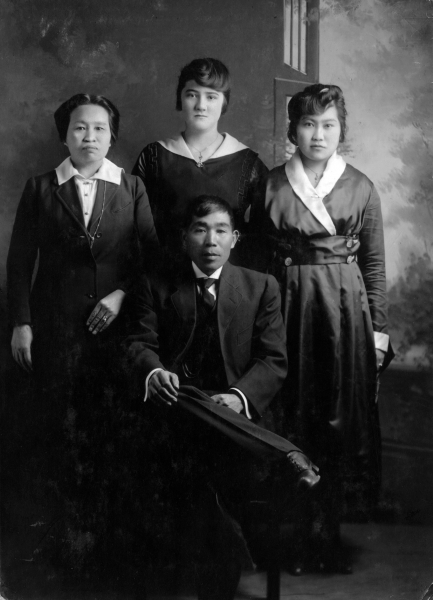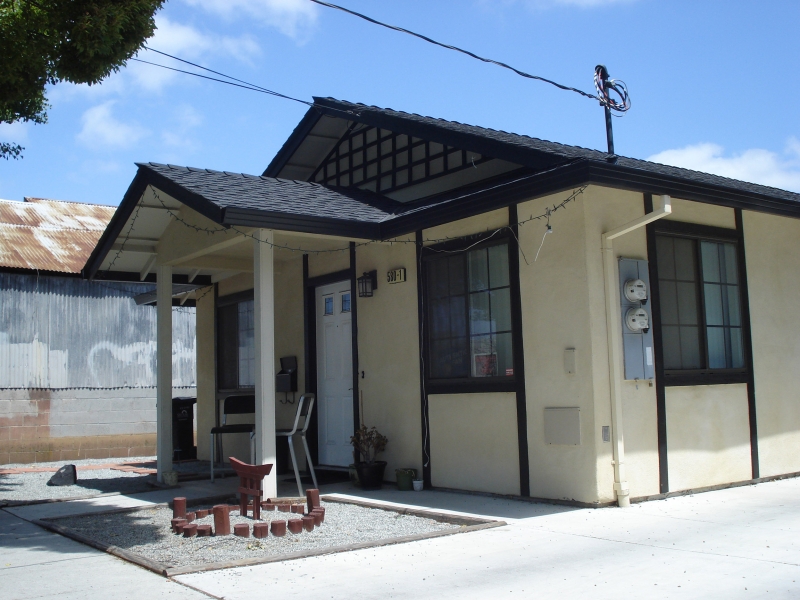
In the late 1980s, I lived in the front half of a very long one-story building near the corner of Fifth and Jackson Streets in San Jose Japantown. Wanting to learn something about the old building, I began by looking through old city directories at the main library downtown. I eventually discovered that the building had been created out of two portable classrooms from Grant School near Tenth and Jackson Streets. They were acquired from the school in 1915 and moved to 580 North Fifth Street where they were joined end to end to create a long narrow house with many rooms. The building was then occupied by a Japanese midwife by the name of Mito Hori. Mrs. Hori lived there with her family while operating a midwifery. The old wood framed structure didn’t have a foundation, but it did have a crawl space. One day, I decided to explore the crawl space to see what I might find.
Crawling in through an exterior entrance, I immediately came upon a partially buried, somewhat mummified cat. I had to crawl close to the cat, and I was surprised at the strength of my irrational fear, as I half-expected the long-dead cat to leap at me at any moment. It didn’t. I crawled the entire length of the building, though most everything that I found was located near the entrance. Besides the mummified cat, I also found a couple of old rice tins, a Dr. Pepper soda bottle, a single men’s shoe, and a pile of narrow tubes with valves. I guessed that the tubes had been gas lighting, discarded with the installation of electric lighting. The Dr. Pepper bottle was the only item that I brought back out with me.

Unfortunately, the historic former midwifery burned down in 2007. At the time, I was working on a profile of Mrs. Hori for a book on San Jose Japantown. I obtained permission through the museum to salvage what I could of the old building. After photographing, videotaping, and sketching the floor plans, I took a look to see what I might save. Peeling back layers of water-soaked wallpaper, I was able to remove samples of the earliest layers from Mrs. Hori’s hallway and one of the many bedrooms. I also found an undamaged door which had been removed and stored in the side yard.
One difficult item that I was able to save was Mrs. Hori’s claw foot bathtub. After digging it out from under a mountain of shingles and tar paper, I drained and disconnected the tub, got it up on end and then sent it out the bathroom window into the soft mud outside. This tub may eventually be installed in the old Kawakami house which stands on the grounds of the Japanese American Museum of San Jose (JAMsj). Finally, I was able to retrieve two of the columns that stood at the entrance of the building, where Mrs. Hori’s son-in-law Hisaichi Nakahara had a dentist office from about 1920 to 1942. The columns are now on exhibit at JAMsj.
I was pleased to see that the house was eventually rebuilt, and on the same footprint as the original structure. The new building looks much the same as the original, though with a lower profile and some elements of Japanese design.

Further Reading in the California Room
- San Jose Japantown: A Journey by Curt Fukuda and Ralph M. Pearce
- San Jose Japantown Historic Context and Survey by Carey and Co.
- Sento at Sixth and Main by Gail Dubrow with Donna Graves
- San Jose City Directories
- Aerial photos from 1931, 1939, 1948, 1960, 1968, and 1981


Add a comment to: Looking Back: SJ Japantown’s Hori Building